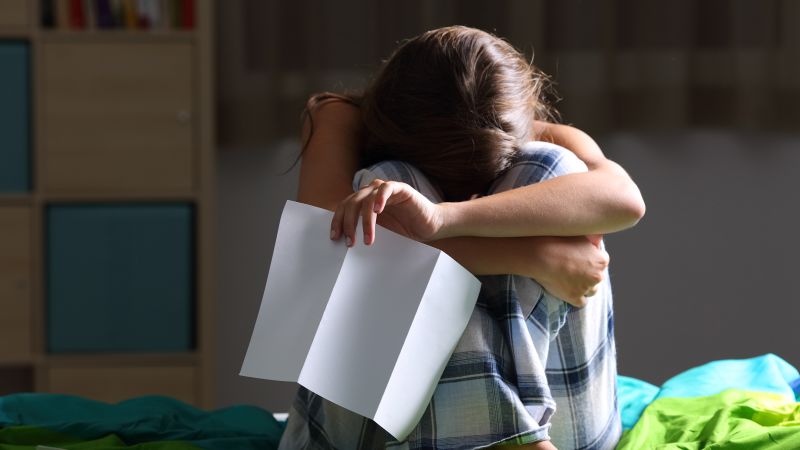Factors affecting mental health in the US, according to survey 1:52
(CNN) --
The pandemic has been tough, but the return to in-person education has also been emotionally difficult for Mary Norris' 12-year-old daughter.
Norris says her daughter was relentlessly bullied at the school she attended last year in Fresno, California, near where her father lives.
So she transferred to a school in Madera, where her mother lives.
This year is going better, but Norris says his daughter is still having emotional problems.
She recently received a call from a school staff member who told her that her daughter had written something disturbing in her journal.
90% of American adults believe that there is a mental health crisis in the country, according to a CNN/KFF survey
“She wrote that she wishes she were dead and that she wanted to kill herself.
And my daughter has always been a very happy and very smiling girl," Norris said.
Norris is one of more than 2,000 adults surveyed this summer by CNN and the Kaiser Family Foundation about mental health issues in the United States.
The nationally representative sample included more than 500 parents.
Nearly half of those parents, 47%, say the pandemic has negatively affected their children's mental health, with 17% saying it had a major negative impact.
advertising
More than 8 in 10 parents said they were at least somewhat concerned that depression, anxiety, alcohol and drug use negatively affect the lives of American teens, while about three-quarters said they were concerned about self-harm or pandemic-related loneliness and isolation.
More than 4 in 10 said they were very concerned about alcohol and drug use, anxiety and depression affecting teens.
Low-income parents (those earning less than $40,000 a year) were more likely than those in higher-income households to say they are very concerned about self-harm, eating disorders, depression, and alcohol and drug use.
According to the survey, more than half of Americans (55%) think that most children and adolescents in the US cannot get the mental health services they need.
Many areas lack mental health providers for children and adolescents
Norris was one of the parents who responded that they couldn't get mental health services for their children because they couldn't find a provider in their area.
She estimates that she has called more than 20 therapists in Madera and Fresno, looking for someone who can see her daughter outside of school.
His daughter is covered by insurance, but Norris can't find anyone willing to take it.
Paying out of pocket for care is not an option: “Unfortunately, my husband and I are on Social Security because we are both disabled.
So our funds are limited.
There is no way I can afford to pay $120 an hour,” she said.
Norris' situation is eerily common.
The American Psychological Association estimates that half of children in the United States who have a mental health disorder do not receive the treatment they need, a circumstance that experts say has only worsened during the pandemic.
How to deal with natural catastrophes so that the impact on mental health is minimal?
According to the association's latest workforce estimates, released in 2020, there are approximately five child or adolescent psychologists for every 100,000 people under the age of 18 nationwide.
That rough average hides huge disparities in access.
Mental health providers who specialize in child care are concentrated in urban areas, but are lacking in rural communities.
According to the association, the vast majority of US counties, 80%, do not have child or adolescent psychologists.
Other types of mental health professionals also treat children, such as licensed clinical social workers and school counselors, but they are also in short supply.
Eric Sparks, deputy executive director of the American School Counselors Association, says his group doesn't have hard numbers on the shortage, but "we heard it loud and clear from school districts and state departments of education."
A 2016 report from the federal Health Resources Services Administration, the most recent available, projected a workforce shortage of nearly 50,000 jobs across the spectrum of five mental health professions by 2025, and that's assuming no demand would increase.
Many experts feel that this shortage has been accelerated and deepened by the stresses of the pandemic.
Karen Stamm has been leading the American Psychological Association's efforts to survey psychologists who treat children, and says the latest findings, from September 2021, showed that child psychologists were receiving more referrals and had fewer cancellations or absences than before the pandemic.
“One statistic I found particularly staggering is that 65% of those surveyed in September 2021 had no capacity to take on new patients,” he said.

